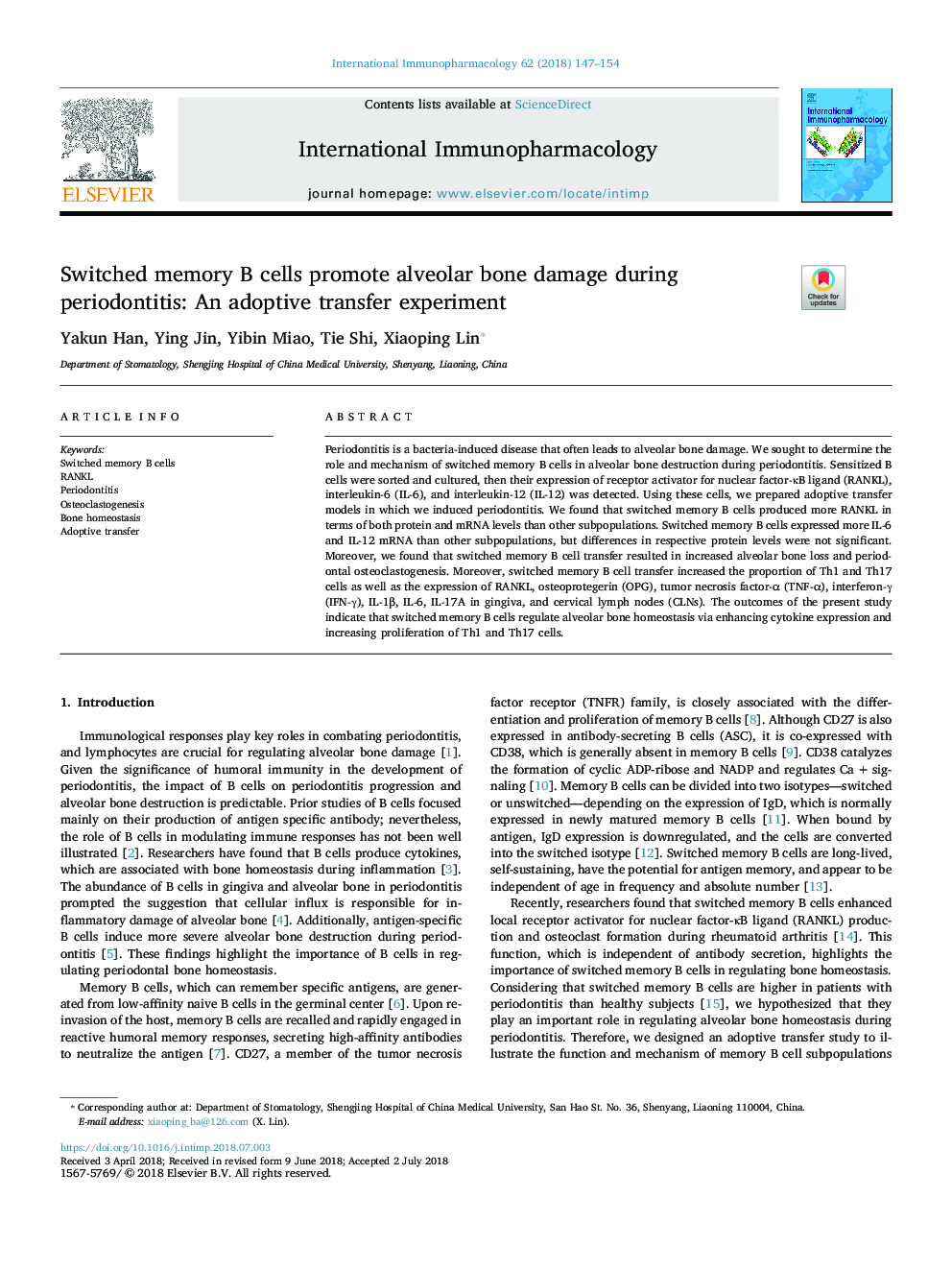| Article ID | Journal | Published Year | Pages | File Type |
|---|---|---|---|---|
| 8530957 | International Immunopharmacology | 2018 | 8 Pages |
Abstract
Periodontitis is a bacteria-induced disease that often leads to alveolar bone damage. We sought to determine the role and mechanism of switched memory B cells in alveolar bone destruction during periodontitis. Sensitized B cells were sorted and cultured, then their expression of receptor activator for nuclear factor-κB ligand (RANKL), interleukin-6 (IL-6), and interleukin-12 (IL-12) was detected. Using these cells, we prepared adoptive transfer models in which we induced periodontitis. We found that switched memory B cells produced more RANKL in terms of both protein and mRNA levels than other subpopulations. Switched memory B cells expressed more IL-6 and IL-12 mRNA than other subpopulations, but differences in respective protein levels were not significant. Moreover, we found that switched memory B cell transfer resulted in increased alveolar bone loss and periodontal osteoclastogenesis. Moreover, switched memory B cell transfer increased the proportion of Th1 and Th17 cells as well as the expression of RANKL, osteoprotegerin (OPG), tumor necrosis factor-α (TNF-α), interferon-γ (IFN-γ), IL-1β, IL-6, IL-17A in gingiva, and cervical lymph nodes (CLNs). The outcomes of the present study indicate that switched memory B cells regulate alveolar bone homeostasis via enhancing cytokine expression and increasing proliferation of Th1 and Th17 cells.
Keywords
Related Topics
Life Sciences
Immunology and Microbiology
Immunology
Authors
Yakun Han, Ying Jin, Yibin Miao, Tie Shi, Xiaoping Lin,
